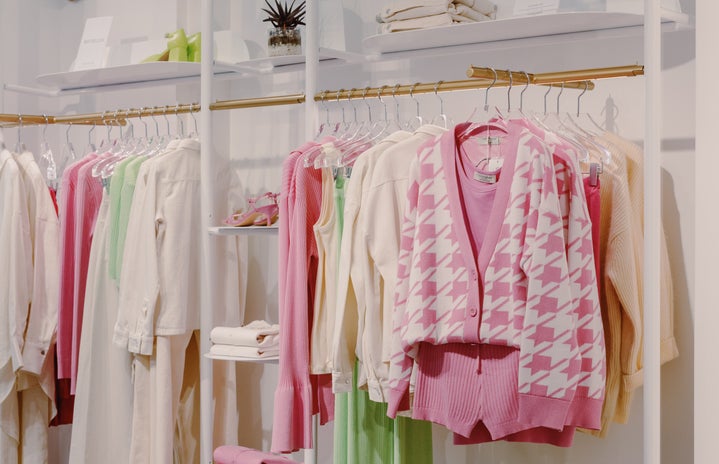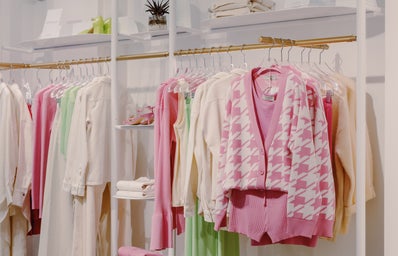From the clean girl aesthetic to the new mob wife era, has consumerism culture gone off the rails? With it still being early into 2024, our social media feeds are covered with the hottest trends and fashion statements for the new year. Every time I open tiktok, the newest must have fashion piece is all over my for you page. But are these trends moving too quickly? With more research discovering the harmful environmental impact of fast fashion, why does it seem like we are consuming more every year?
The newest trend on tiktok is the mob wife aesthetic. Think big hair, leopard print, fur, and knee-high boots. There are thousands of videos teaching us how to craft the perfect mob wife makeup style and what pieces are a need for your wardrobe. However, the issue with this new ‘mob wife era’ shining through in 2024, this means old trends are discarded alongside all the products and clothing bought with it. Do we really need to create a new identity and aesthetic every few months just to fit in with online trends? The quick turnover of fashion has only accelerated due to these media trends. A few months ago, the ‘clean girl aesthetic’ was the focus of fashion, with lululemon and essential beige basics. One TikTok video titled ‘mob wife is in, clean girl is out’ highlights this quick and dramatic shift in trends. So, when an entirely juxtaposing trend takes over, to fit in, an entire new wardrobe must be bought. This is costly, meaning usually cheap fast fashion substitutes of quality items are bought, with big sweatshops like Shein able to quickly produce thousands of items catering to new trends. This is clearly not sustainable, yet we allow social media to quickly turnover trends within weeks.
The rampant consumerism culture that has taken over the internet is not to be underestimated, with global consumption rising every year. The numbers are consistently on the rise, with CNN reporting the statistics displaying this clear increase in consumerism. 80% of all clothing ends up in landfills or incinerated. Even just buying 1 white shirt results in the same amount of greenhouse gas emissions as driving your car for 35 miles. These types of statistics highlight how even only small purchases can make a large impact. Seeing these numbers makes you realise how quickly the fashion industry has taken over, fuelled by social media trends. The quick turnover of these trends means companies can make more money producing cheap poorly made items. Social media is filled with videos of large fast fashion hauls, with many influencers later going on to complain their clothes break so easily. Yet this is no surprise when they are made of poor material and produced within days of a new trend.
I admit that I do fall into the trap of seeing fun new fashion trends, being desperate to try them myself. However, instead of immediately opening the Urban website, take a second to look in your own wardrobe and see if you already have basics that can recreate this new fleeting aesthetic that will likely be overdone and seen as basic in a month. Or if you are that desperate to find the perfect piece, looking on Depop and Vinted or going to charity shops are a more sustainable and cheaper option. Although it can be difficult to go with the more sustainable option, the long-term effects are far better for the environment, alongside you likely having a better-quality item that will last you far longer than the hottest new tiktok trend!


